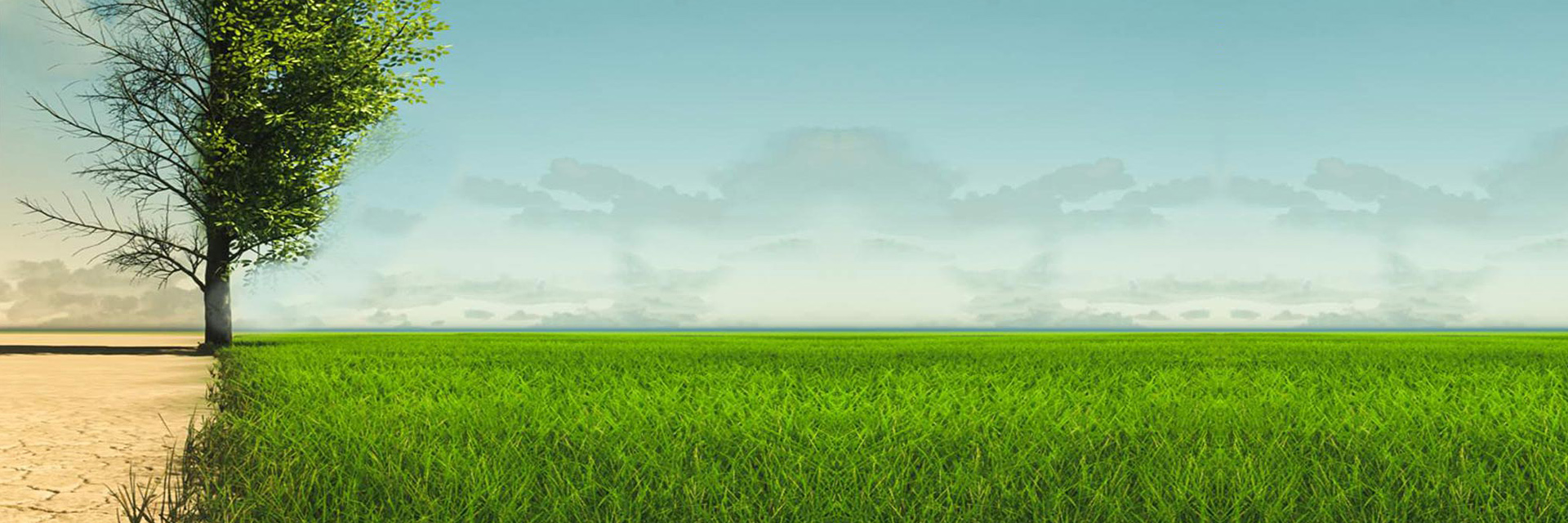India Faces Water Crisis - Any solution for Water Crisis?
Art of living to resolve
Do you know what is the current situation of water crisis in India?
At least 54% of the sub-continent has turned into a water-stressed dry-land with many rivers rapidly drying up. Experts opine that by 2025, the country will be facing an acute water crisis if no preventive measures are taken today. Interestingly, most parts of the country receive generous amounts of rainfall, but still there is an acute shortage of water for agricultural and domestic use throughout the year. Contrary to general belief, rainfall fulfils only a fraction of India’s total demand for water. Only 20% of India’s agricultural and domestic requirements are met by rain and water bodies like rivers, lakes etc. The remaining 80% is dependent on groundwater for sustenance.
This groundwater is continuously depleting at an exponential rate since the past 20 years owing to the disrupted hydrological cycle leading to a water stress in many areas in the country. Loss of forest cover and vegetation all over the country in the past years has alarmingly reduced the recharge rate of the ground water table. Moreover, developmental activities like the expansion of the road network, construction of hydroelectric projects have impacted the water bodies, rivers and their basins. The most common problems which have been identified include reduced water flow in the rivers, fragile ecology, river bank and soil erosion, siltation etc. All these issues have led to the poor health of the rivers, which is reflected in both the quantity and quality of water, which affects agricultural productivity, livelihood security, public health, and aquatic. And matters are made worse by the blind extraction of water from this already depleting source. According to the Central Ground Water Board of India (CGWB), 239 trillion litres of groundwater is extracted every year. Rainfall over natural catchment areas is the only source of recharging this ground water, but research data from the Central Water Commission of India (CWC) shows that 78% of the water from rainfall runs off the surface and flows in to the oceans, rendering it incapable of domestic use as well as augmentation of the ground water recharge.
These numbers clearly indicate that the existing rainwater recharge mechanisms operating in nature, as well as those few already undertaken by the people of the country will not be sufficient to tackle this problem.
Solution to water scarcity in India
A Natural Lifeline to Sustainable Water Supply
Beneath the Earth's surface lies a hidden solution to water scarcity - groundwater. Groundwater plays a critical role in sustaining life and ecosystems on Earth. It serves as a dependable source of fresh water for millions worldwide, especially in regions where surface water is scarce or unreliable. The careful management of groundwater resources is essential to ensure its continued availability and functionality.
Understanding the Technique of Groundwater Recharge
Groundwater recharge refers to the technique by which water replenishes the underground aquifers. It occurs when precipitation, such as rain or snowmelt, infiltrates the ground and percolates through porous soil and rock layers to reach the water table. Recharge is a natural and continuous process that refills aquifers and balances groundwater.
Factors Affecting Groundwater Recharge
Several factors influence the rate and efficiency of groundwater recharge:
Precipitation:
The amount and intensity of rainfall or snowfall in an area are critical factors in determining recharge rates. Areas with higher precipitation generally experience more significant recharge.
Soil and Rock Permeability:
The permeability of the soil and rock layers affects how quickly water can infiltrate and reach the water table. Highly permeable materials allow faster recharge compared to less permeable ones.
Land Use and Land Cover:
Human activities, such as urbanisation and deforestation, can alter the natural landscape and reduce the recharge potential. Impermeable surfaces prevent water from seeping into the ground.
Topography:
The land's shape and slope influence the water flow and its ability to recharge aquifers. Low-lying areas and depressions tend to promote recharge.
Climate Change:
Alterations in climate patterns, such as prolonged droughts or intense storms, can impact groundwater recharge rates and cause fluctuations in aquifer levels.
Importance of Recharging Groundwater
Groundwater Recharge - A sustainable solution for water scarcity management!
Drinking Water Supply
Many rural communities in India rely heavily on groundwater for drinking water. By recharging groundwater, these communities can ensure a consistent and reliable source of clean water for their daily needs.
Agriculture and Livelihoods
Agriculture is the backbone of rural India. Groundwater is crucial for irrigation, especially during dry periods or when monsoon rains are insufficient. Recharging groundwater helps maintain soil moisture levels, supporting crop growth and ensuring food security.
Drought Resilience
Rural areas often face water scarcity during droughts. Groundwater recharge acts as a buffer against droughts, providing a reserve of water that can be tapped into when surface water sources run low.
Ecosystem Health
Groundwater recharge contributes to the health of local ecosystems, including rivers, streams, and wetlands. Adequate groundwater levels ensure the sustenance of aquatic life and preserve biodiversity.
Mitigating Water Scarcity
Rural regions frequently encounter water scarcity issues due to increasing demand and variable rainfall patterns. Groundwater recharge helps alleviate water shortages by maintaining a balanced and sustainable water supply.
Community Empowerment
Implementing groundwater recharge systems can empower rural communities by giving them control over their water resources. It encourages community involvement in managing water availability and quality.
Reducing Dependence on Monsoons
In many parts of rural India, agriculture relies heavily on the monsoon season. Groundwater recharge reduces the dependence on erratic monsoons, making agriculture more resilient and less vulnerable to climate variability.
Preventing Land Degradation
Over-extraction of groundwater can lead to land subsidence and soil degradation. By promoting recharge, rural areas can prevent these negative impacts and maintain the overall health of the land.
Health and Sanitation
Recharged groundwater contributes to improved sanitation and hygiene practices. It ensures an adequate supply of water for sanitation facilities, reducing health risks and improving overall well-being.
Sustainable Development
Groundwater recharge aligns with the principles of sustainable development, promoting long-term water security while preserving natural resources for future generations.
In essence, recharging groundwater in rural India is a vital strategy for enhancing water availability, promoting agricultural productivity, supporting ecosystems, and improving the quality of life for millions of people. It is a cornerstone of sustainable development and resilience in the face of environmental challenges.
Methods of Groundwater Recharge
The Art of Living team uses a comprehensive approach to restore the hydrological cycle and revitalise water bodies. This involves restoring rivers, drains, lakes, and ponds to their natural state, enabling efficient rainwater capture. Local communities are actively involved, and capacity building through training is emphasised. Afforestation and soil conservation measures are implemented. Specialised structures designed by scientists, hydrogeologists, and GIS experts maximise water percolation into groundwater aquifers. Some of these structures include:
Implementing Boulder Checks proves to be a highly effective method for reducing water runoff velocity. These structures aid in increasing soil moisture and play a crucial role in preventing erosion. The successful implementation of this technique is evident in its application within the Bundelkhand watershed project.
Recharge Wells enhance groundwater recharge through stream network channels. These wells, typically 6-metre deep and 1-metre in diameter, constructed with concrete rings, are filled with jelly and gravel material. Recharge wells have proven to be a highly effective method of water conservation, successfully implemented in numerous projects.
Recharge Borewells or Injection Wells revitalise Deeper Aquifers through Groundwater Recharge. These borewells are typically drilled to depths ranging from 80 to 100 metres, serving as focused water recharge points. They are crucial in augmenting groundwater recharge within dried-up fracture horizons and lineament zones.
Recharge Shafts serve as essential recharge structures in ponds and play a crucial role in water conservation. These structures feature deep rectangular filter chambers that act as natural filters. These structures facilitate the natural recharge of groundwater levels by enabling water to penetrate up to 100 feet.
Gabion Structures are built along the stream flow using locally sourced boulders. These structures, known as boulder checks, effectively slow down the water flow and promote soil moisture recharge. This, in turn, facilitates the growth of natural vegetation.
A Subsurface Dyke is a barrier built below the ground in the permeable zone to prevent the base flow from flowing downstream and enhance the water level on the upstream side. Through obstruction of the natural flow of water, a subsurface dyke controls the amount of water stored in an aquifer.
Desiltation restores water-carrying capacity and harness nutrient-rich silt for soil enrichment. Desilting involves gradually removing accumulated silt from water bodies over the years. This crucial process aids in rejuvenating the water body's ability to carry water. At the same time, the extracted silt, abundant in nutrients, can be utilised as a valuable soil enhancer in agricultural practices.
Deep Contour Trenches work well in low rainfall regions mitigating soil erosion and enhancing soil moisture. Deep contour trenches are particularly suitable for areas experiencing rainfall below 750 mm per year, with up to 8% slopes. These purposeful channels are designed to effectively combat soil erosion while increasing the soil's moisture content.
Farm Ponds enhance surface water accessibility for livestock and local needs. Water reservoirs are strategically built at the confluence of streams to minimise evaporation losses and capture subsurface flow. Serving as micro eco-restoration cells, these ponds facilitate water availability while promoting ecological balance.
Implementing the aforementioned watershed projects can yield substantial outcomes in water conservation and reduction of soil erosion. Integrating these techniques makes it possible to prolong the lifespan of water streams and ensure sustainable water availability for diverse purposes.
As custodians of this finite resource, we are responsible for safeguarding and preserving groundwater for current and future generations, guaranteeing a sustainable water supply and a healthier planet.
Testimonials
When I came to know about the benefits of JalTara, I decided to implement it on my farm. It has prevented waterlogging and preserved groundwater for a longer time.

Krishna Takle
Farmer, Pokhari Village, Jalna District
Under JalTara Yojna, recharge structures were constructed on my farm. Usually, during the summer season, we experience drought problems, but this time there is enough water available for farming all year long.

Digambar Baburao Takle
Farmer, Manta Taluka, Jalna District
After the implementation of the JalTara Project, the water level in my area has increased.

Gyaneshwari Kakde
Farmer, Manta Taluka, Jalna District
Before JalTara Yojna no effort was made to conserve water. After the implementation of JalTara Yojna, we have plenty of water in our hand pumps.

Suman Bai
Farmer, Murumkheda Village
Our village, Shivangiri, benefited from the JalTara Project. This strategy has raised groundwater levels and doubled our income. Today, farmers are happy.

Madan Pandrinath Jadhav
Farmer, Jalna District
In the framework of the JalTara project, we built recharge shafts close to wells. After the very first rain, we discovered that the water level had risen to 75%. The JalTara project is an excellent way to end water scarcity and should be implemented by everyone to increase groundwater.

Mahadev Nivratti Narvade
Farmer
JalTara prakalpa was started in our village last year. I want all the farmers to know about its benefits. Since we live in a mountainous region, the water levels in our village were very low. We dug many wells in our village, but none provided water.
The implementation of JalTara in our village benefited us in two ways: first, it increased water levels, and second, the land, which previously turned muddy due to rain, now remains dry as the water is absorbed by the recharge structures.
Every farmer should implement this project in their village.

Balasaheb Bahekar
Farmer, Jalna District
I had 6 acres of land, of which one acre produced crops. Previously, there was mud after rains. After the construction of JalTara recharge structures, the water level in my well has risen. I can grow more crops now.

Appasaheb Bahekar
Farmer, Jalna District
I have been farming for two years. JalTara came into existence in our village last year. I own 32 acres of land for farming where 40 JalTara recharge structures were constructed. Earlier, where there were 8-10 crore crops, now the land is producing 13-14 crore crops every year.

Narayan Vaidyanath Dighe
Farmer, Ambora, Jahangir Village
Our village's water situation deteriorated after the rains because the mud was everywhere. We needed more water to grow crops. After JalTara's implementation, the situation has improved as all the rainwater goes into recharge structures. Now there is no mud, and water levels have risen.

Balasaheb Lomte
Farmer, Jalna District
JalTara's technique benefited us. We didn't have to spend anything to implement the JalTara technique on our farm and reaped immediate benefits after recharge structures were constructed next to our wells as the water levels doubled.

Vikas Hamre
Farmer, Warud Village
Due to JalTara recharge structures, water levels in the well of my village have increased. I recommend that all the farmers in other villages should implement the JalTara technique on their farms.

Baburao Jaivanto Kakde
Farmer, Jaipur Village (MH)
I was hesitant to bring JalTara onto my farm because the water levels in my well were low during the summer and it was muddy everywhere during rains. In the years 2021–2022, the construction of JalTara recharge structures helped absorb the excess water in the soil and raised water levels in wells. Everyone should implement these to see the results.

Sugan Nitnavre
Farmer, Shivangiri Village (MH)
Earlier, there was too much mud on the farm. Excess water was soaked after constructing JalTara recharge structures. Water levels in my wells have increased. Soybean & chana crops production optimized.

Sulabai Chavhal
Farmer, Murumkheda Village (MH)
After JalTara recharge structures are constructed, crop yield has doubled. Earlier, we used to run the motor for two hours but still had no water. After the construction of JalTara recharge structures, the water level has now increased in the summer too.
I have been farming for 15 years. Due to a lack of water, crop production was very low, but now, after the implementation of JalTara, the crop yield has doubled. I believe the JalTara project will benefit all Maharashtra talukas and districts.

Appasaheb Chauhan
Farmer, Jalna District
Earlier, one of my wells dried up and was not in use. I implemented JalTara on my farm, but neighbouring farms faced the problem of excessive mud. After seeing me, they also implemented JalTara recharge structures, which led to an increase in 14 quintals of soybean yield.

Ashok Ambure
Farmer, Jalna District
Previously, 90% of the houses in this area were made of mud. Currently, 60 to 70 % of houses are built of concrete, and the remaining ones will be finished within a year. When I finish building my house, I'll give it the name 'JalTara'

Nivritti Kisarao Palve
Farmer, Palashkheda Village, Jalna



